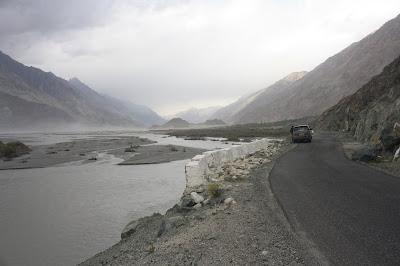I must confess, I’m not particularly a coffee person - just
one cup every morning for a spurt of energy to take me past a day of chores.
But, the prospect of having egg coffee in Vietnam got me quite excited – as all
things local & traditional do.
It was one of the first things (along with Pho) that I had
asked for in restaurants in Saigon. I got enough and more Pho, not so lucky
with the coffee. As I was to learn, most Vietnamese prefer their coffee bitter
and black. For white, they add condensed milk. At cafes, the coffee would be
served without sugar, and no matter how much sugar I added, it was never sweet
enough!! Furthermore, in the South, I sensed a clear preference for cold coffee
as well – to the extent that, if not clearly mentioned at a cafe, the default
coffee served would be COLD. Later, during the Cu Chi tunnels tour, our guide,
Hang, tells us that getting egg coffee in Saigon would be difficult, “Egg
coffee is amazing, but you only get it in Hanoi. Not sure why, but maybe it is
because of the cooler climate there”.
So be it! The wait continues....
When we landed in Hanoi a few days later, we immediately hit
the Thuy Ta cafe which sits on the North bank of the Hoan Kiem lake. It made
for a wonderful evening, looking out at the lake. But, my hopes were dashed -
they didn’t serve what I needed. However, on the way to the lake, I had noticed
a cafe, ‘The Note coffee’, that had a board outside saying that they served Egg
coffee. I made a mental note of it for later. My disappointment extended to
next morning when there was no egg coffee for breakfast at the hotel as well.
Our guide to Trang An, Long, later explained, “Egg coffee is just for tourists.
Locals have black coffee. It is made with raw egg yolk, so people get a bad
stomach”. Another case of diminishing
tradition? Perhaps, but my hopes weren’t diminished yet!
Next morning, I headed to the Note Coffee. Opposite the Thuy
Ta, this cafe was narrow but lifted a few storeys above, so it gives its
customers a good view of the lake and street around it. But, before I could
finally enjoy some Ca phe trung, I found myself lost in the decor of the cafe –
Notes, from customers, posted all over - on chairs, walls, tables, everywhere.
It certainly made for an interesting read. That was cut short though, as <trumpet
blast> my coffee had arrived – with a little note J
But it didn’t seem like anything I read in the reviews – it
wasn’t creamy, it wasn’t thick, it tasted like the coffee I got back home. When
talking to the waiter I realise that there was no egg yolk and less condensed
milk. The search continued...
 |
| Inside the Note Coffee Cafe |
 |
| My coffee, with a note :) |
 |
| So, I left behind a note as well |
With one day left in Hanoi & Vietnam, I had to switch
from explorer/traveller mode to Google search mode. Not proud of it, but it had
to be done.
Top of the recommendations was Giang cafe on the eastern
edge of the old quarters. It took some time finding the place, primarily
because the entrance is really small & narrow. I go upstairs to find the
tables and chairs overturned – I was in too early. The owner walks in and turns
on the lights to reveal a dusty, small room with old paint clinging to its
walls and even older paintings hung above- surely this is the place! The coffee
was placed on my table 10 mins later. The two layers of the coffee were visible
through the transparent mug that was in turn placed in warm water (to keep the
coffee warm). It was thick, creamy and tasted like tiramisu. I had finally
found my Cà phê trúng and the search was worth it!
 |
| The real deal! |
 |
| Inside Giang's |
 |
| Don't miss the entrance |
Later that evening, I tried another from the Google list –
Cafe Pho co on Hang Gai. The coffee wasn’t as good as Giang’s, but the view was
unmatched. You have to enter the cafe though a silk shop on Hang Gai and climb
3 floors to a rooftop where you get an amazing view of Hoan Kiem lake.
 |
| @cafe pho co |
 |
| Breathtaking view from the top |
And if you are wondering what happens to your stomach after
2 cups of egg coffee in a day – well, nothing. I guess Mr. Long was wrong.
Buying Coffee in Vietnam
- Around Hoan Kiem & in the old quarters, you will find
plenty of coffee shops selling Local coffee and weasel coffee
- I finally bought Huongmai coffee in Hanoi which was a bit
expensive (360k VND for 250g, about thrice the cost of other brands), but most
reviews said that it was the real deal
- In Saigon, our guide, Hang (from water buffalo tours -
http://waterbuffalotours.com), had recommended going to the Phuc Long cafe at
63 Mac Thi Buoi. They grind the beans fresh here. Unfortunately, I didn’t get time in Saigon to pick up any
- If you are interested in buying the filter as well, they are available for as little as 15k VND in the markets


















































